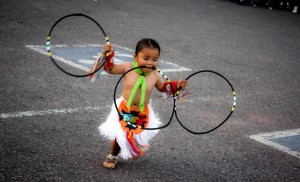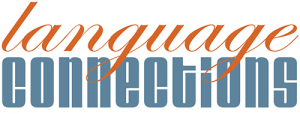Sir We Need a Plan!
 During World War II, the ability to communicate maneuvers and planned attacks became absolutely vital. With the Germans and Japanese deciphering multiple codes to gain a militaristic advantage, when the United States entered the war it became clear that they would need to use a language that was basically unknown to the enemy. This helped bring about the concept of using Native American languages on the battlefield. During World War I, U.S. regiments had experimented with the Native American Choctaw language, using it as a code against the Germans in numerous planned attacks. But after World War I, Germany and Japan sent students to study Native American languages, making it impossible to use this coding system during World War II. When the United States entered World War II in the winter of 1941, the idea of code talkers seemed to be a dream of the past. Luckily, there was one language that had been overlooked: Navajo.
During World War II, the ability to communicate maneuvers and planned attacks became absolutely vital. With the Germans and Japanese deciphering multiple codes to gain a militaristic advantage, when the United States entered the war it became clear that they would need to use a language that was basically unknown to the enemy. This helped bring about the concept of using Native American languages on the battlefield. During World War I, U.S. regiments had experimented with the Native American Choctaw language, using it as a code against the Germans in numerous planned attacks. But after World War I, Germany and Japan sent students to study Native American languages, making it impossible to use this coding system during World War II. When the United States entered World War II in the winter of 1941, the idea of code talkers seemed to be a dream of the past. Luckily, there was one language that had been overlooked: Navajo.
Language Fact:
Navajo is an Athabaskan language spoken primarily in the southwestern United States on Navajo reservations. The Navajo language has more speakers than any other Native American language in North America.
English In, The Navajo Language Out
The mastermind behind the idea of using Navajo as a code language during World War II surfaced through the brilliance of Phillip Johnston, who spent his entire life on a Navajo reservation learning to speak the language as a child. His fluency in the language was so highly regarded that at the age of nine he was asked to be an interpreter in Washington D.C. to help advocate for Native American rights.
In 1942, Johnston approached the Force Communications Officer at Camp Elliot in San Diego, California with the concept of Navajo code talkers. The Major accepted to hold a demonstration with Johnston and four native Navajo speakers. Overcoming deliberate attempts to intercept messages by trained code experts, it proved to be a success, and Navajo was accepted as a means to communicate radio messages effectively for the remainder of the war.
Battlefield Language Into Code | Navajo language
As the war continued, the code talkers developed a system to translate and securely transmit coded messages. This was done by translating Navajo words into English battlefield terminology. For example, the Navajo word for hummingbird, Da-he-tih-hi, became code for ‘Dive Bomber.” The initial code consisted of 211 English translations of the most frequently used military words.
Another 200 words, along with Navajo equivalents for the 12 most used letters of the English alphabet, were added as the code evolved to include 411 terms. This second layer of coding helped to transmit words that didn’t have any equivalents by spelling allowing them out to be spelled out. During the invasion of Iwo Jima, code talkers played a significant role in overtaking the island, transmitting over 800 coded messages.
Honored For Their Service | Navajo language
As the war progressed, the number of code talkers grew to include over 400 highly-trained, bilingual Navajo men. But once World War II came to a close, they quietly returned to their homes. It wasn’t until 1982 that U.S. President Reagan gave these brave men proper recognition, declaring August 14 the official “Navajo Code Talker’s Day.”
On December 21, 2000, U.S. Congress passed a law, signed by U.S. President Clinton, awarding the Congressional Gold Medal to the original 29 WW II Navajo code talkers, and Silver Medals to an additional 300 who had served as code talkers. In July 2001, U.S. President Bush presented the Gold Medal to four of the surviving original code talkers.
About Language Connections:
Language Connections is one of the top language service companies in the US. Over the last 30 years, we’ve focused on providing the best business translation services, interpreting services, as well as interpreter training and customized language training programs. In addition to top-tier corporate language training, we offer certified corporate interpreters and professional business translation services in 200+ languages. Our network includes linguists with backgrounds in all major industries. They’re ready to meet your needs, whether they’re for technical translation services, legal translation, government translation services, international development translation services, education translation services, life sciences translation, or something else. Reach out to us today for a free quote on our cost-efficient and timely translation services, interpreters, or other linguistic services.
Language Connections Inc.
2001 Beacon Street, Suite 105,
Boston, MA 02135
Phone: +1-617-731-3510
Email: service@languageconnections.com

